Comprehensive project documentation is critical to successful project management as it serves as the roadmap that guides teams from conception through completion.
It ensures all stakeholders have clarity around project goals, timelines, responsibilities, and progress, fostering transparency and accountability.
Without it, you could lose your valuable time and resources. In 2021 alone, teams spent 140 hours in meetings that could have been avoided.
In this blog, we will talk about the importance of project documentation and how to create it. We will also explore some project management templates and examples and learn how to choose robust project documentation software.
What Is Project Documentation?
According to the State of Project Management Report 2020, 68% of project managers say they expect project work to continue increasing. Project documentation is an effective way to keep busy managers sane and focused on their project portfolios.
Project documentation is an online document comprising information related to project details, milestones met, targets achieved, changes accommodated, and much more. This document acts as a centralized reference point where teams can quickly find the information they need to complete certain tasks, track progress, or check recent updates.
This documentation contains all the information required to manage projects easily, from project reports and business cases to project plans, proposals, budgets, and risks.
By consolidating all project information in one place, this documentation brings clarity to the project management process and helps teams stay on the same page. While this keeps the confusion at bay, team alignment and productivity also substantially improve.
For example, consider the developer guide for CRM software, including setup instructions, API documentation for integration with other systems, user manuals detailing each feature, and troubleshooting guidelines.
It would also feature a release notes section that provides updates on new features, bug fixes, and performance improvements in each version.
Why Is Project Documentation a Must for Your Business?
As a centralized space where all project details are clearly mentioned, project documentation ensures that everyone in the team knows the project goals, developments, vision, and scope.
Let’s explore all the benefits.
Enhanced Communication
Project documentation provides a clear and accessible record of project plans, processes, and expectations, facilitating better communication among team members, stakeholders, and clients.
It ensures everyone involved understands the project’s objectives, status, and requirements, minimizing the risks of misunderstandings and misalignments that could lead to project delays or failures.
Improved Project Planning & Execution
Comprehensive documentation, including project plans, timelines, and scope statements, helps set realistic timelines, allocate resources efficiently, and manage stakeholders’ expectations.
It acts as a roadmap, by incorporating lean methodology, that guides your project team through each phase of the project lifecycle and helps to ensure that project activities align with the agreed-upon objectives and deliverables.
Effective Risk Management
Documenting potential risks and strategies for their mitigation is crucial for proactive risk management. It allows teams to anticipate challenges and implement solutions in advance, reducing the likelihood of project disruptions.
Also, historical documentation from past projects can provide valuable insights for identifying and managing risks in future projects.
Facilitates Knowledge Transfer & Continuity
Project documentation ensures that crucial information is recorded and preserved, making it easier to onboard new team members and transfer knowledge within the organization.
This continuity is essential in long-term projects or those experiencing personnel changes, as it prevents the loss of critical information and maintains project momentum.
Ensures Compliance & Accountability
Documentation provides evidence of compliance with these standards for projects subject to regulatory requirements or internal guidelines.
It details the procedures followed, the decisions made, and the reasons behind those decisions, enabling accountability and traceability. This helps audit processes and evaluate the project’s success and areas for improvement.
What Are the Types of Project Documentation?
Understanding the essential documents in project management is vital for guiding projects to successful completion.
Let’s explore these types.
Project Charter
It is a foundational document that officially initiates a project, outlining its purpose, objectives, and scope. It grants the project manager the authority to allocate organizational resources to project activities.
It includes information on the project’s goals, key stakeholders, initial requirements, budget, and timeline. It serves as a reference for the project’s vision and boundaries, ensuring all stakeholders have a unified understanding.
Statement of Work (SOW)
It is a detailed document that describes the project’s specific activities, deliverables, and timelines. It also outlines the criteria for performance, acceptance, and payment.
It helps set clear expectations between the project team and external vendors or contractors, ensuring that all parties understand the work, the project’s milestones, and the standards to accept the completed work.
Requirement Documentation
It captures all the specific needs and expectations that the project must meet. It forms the basis for project planning, design, and execution, ensuring project outcomes align with stakeholder requirements.
It is used throughout the project lifecycle to guide decision-making and validate its progress and success.
Stakeholder Communication
It involves the strategies and methods to engage with and inform project stakeholders. Effective communication plans outline how and when to share project updates, progress reports, and changes.
Keeping stakeholders informed and engaged is crucial for maintaining support and managing expectations throughout the project.
Change Management
It outlines the processes and controls for managing changes in the project scope, schedule, and costs.
It includes mechanisms for requesting, approving, and implementing changes, ensuring that any modifications are systematically evaluated and integrated into the project plan while minimizing disruptions.
Risk Analytics & Documentation
It involves identifying, analyzing, and documenting potential project risks and their mitigation strategies. This documentation helps assess the likelihood and impact of risks, allowing for proactive planning to minimize their effect on the project.
Regular updates ensure that new risks are captured and managed appropriately.
Issue Log
It is a dynamic document used to track and manage issues that arise during the project. It records details about each issue, including its description, impact, assigned owner, and resolution status.
Maintaining an Issue Log helps ensure that issues are promptly addressed, preventing them from becoming more significant problems that could derail the project.
Progress Reports
These provide regular updates on the project’s status, including what has been completed, what is currently in progress, and any issues or risks identified.
They are essential for keeping stakeholders informed about the project’s advancement and any deviations from the plan.
Quality Management Plan
It outlines the standards, methodologies, and metrics that will be used to ensure the project meets the defined quality requirements.
It covers quality control, quality assurance, and continuous improvement processes, ensuring that the project’s deliverables are of the highest possible quality.
User Training Materials
These are developed to facilitate the transition to the new system or process introduced by the project.
They include user manuals, training guides, and online help resources to ensure end-users are fully equipped to utilize the new system effectively, ensuring smooth adoption and minimizing resistance to change.
How to Write Project Documentation in 6 Easy Steps
Now that you’re well-acquainted with the incredible benefits of project documentation, it’s time to equip yourself with the essential know-how to create it effectively.
Bring all Scattered Documents in One Place
You might have project information scattered across Word docs, interactive PDF files, Excel sheets, and PowerPoint presentations. The first step to creating project documentation is to bring all this valuable information together in a centralized space.
Modern project documentation tools offer features that help you directly import such files to the document. This makes content transfer pretty simple and fast.
As for the missing information, you will have to write it from scratch. For example, if you do not have pre-built documents for project plans and scope, create articles on these topics after discussing them with your team.
This will put in place a single source of truth that your project team can instantly refer to whenever they are stuck on a task or need assistance.
Take it Stage by Stage
While writing project documentation, taking the process step by step is essential – one stage at a time. For example, the initiation involves setting up the team and outlining the basic requirements. The documentation should cover this stage’s project proposal, scope, and team structure.
After initiation comes the planning stage. For this stage, your project documentation should have thorough articles on the project plan, roadmap, communication strategy, and budget details.
For the execution phase, it is essential to add project status reports and potential risks expected during the project. This information is necessary to keep team members aligned throughout the project lifecycle.
Changes are a vital part of any project. That makes change management an essential stage in the process. Any changes requested by the client should be recorded in the change management section of the project documentation.
Teams can quickly go through this section to keep track of the changing client requests and alter their strategies accordingly. Last comes the evaluation stage when the project is delivered, and it’s time to assess what went right and what didn’t.
Project closure details and progress reports should be a part of your documentation for this stage. This will help you track the overall project and team performance and identify bottlenecks that posed hurdles in the project. They can then implement what they have learned in future projects and achieve better outcomes.
Pave Way for Collaborative Authoring
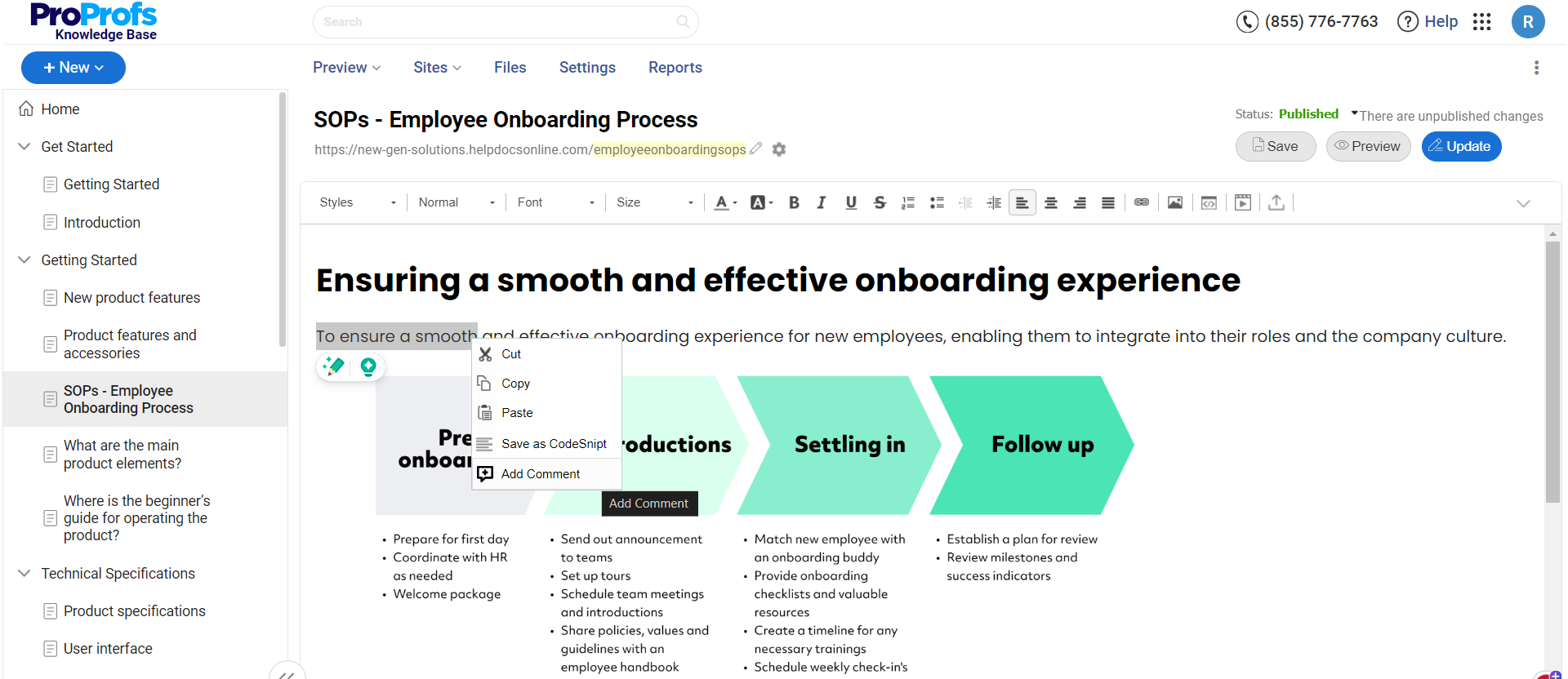
From the previous step, it is clear that project documentation is a comprehensive resource that is impossible for a single person to manage. You need a strong team with the dedication and passion to record all that goes on in the project consistently – every milestone achieved, deadline met, or change requests accepted!
By deploying a tool like ProProfs Knowledge Base, you can add users and assign relevant roles and permissions to each one of them. For instance, some users can work as contributors – the ones who will do all the writing work, and some can take charge of editing all that’s written to ensure quality is not compromised.
You can also assign the administrator role to users who have proved themselves to be capable managers. They are the ones who will take up the responsibility of overseeing every activity happening in the documentation, identifying gaps, and taking timely steps to ensure smooth operations.
Structure the Document & Make it Easy to Search
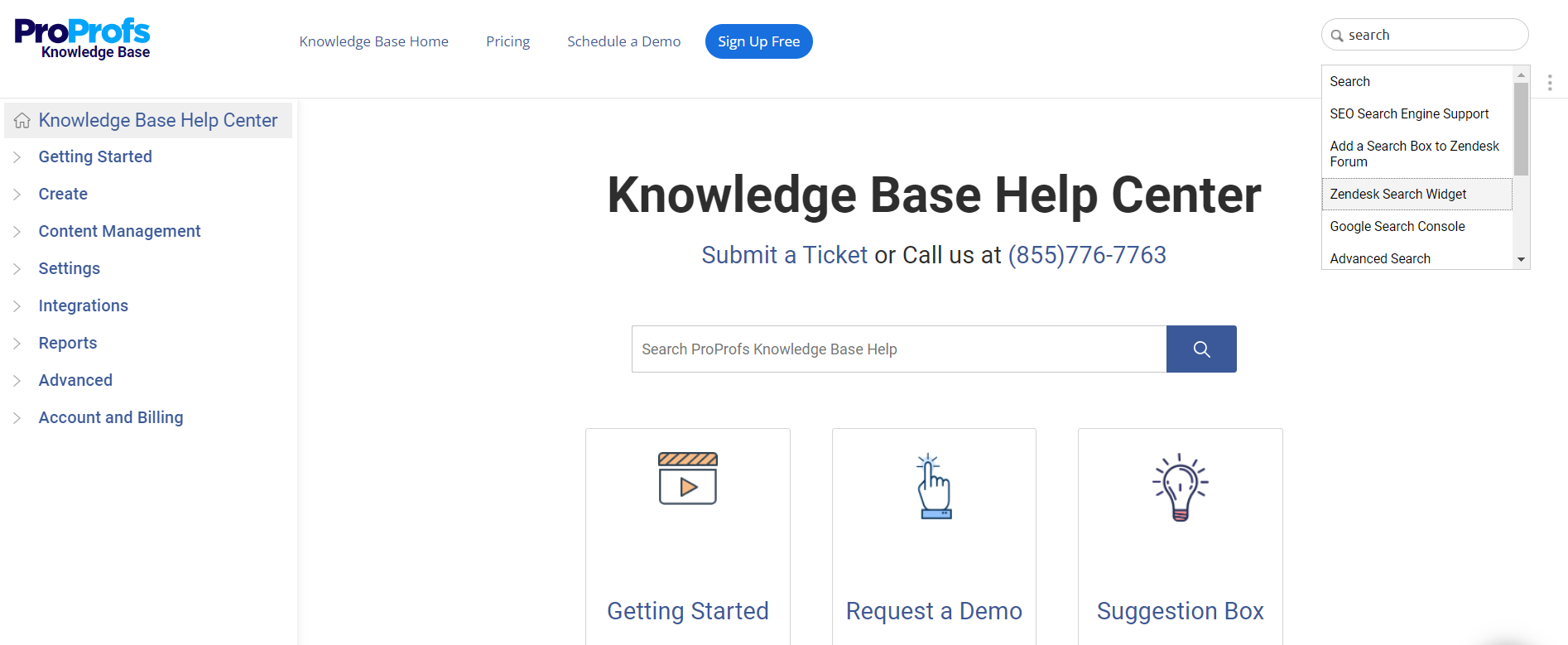
Project documentation loaded with helpful information but lacking a logical structure is counterproductive. An unstructured document will likely confuse your team members and make them confused and indecisive.
Once you have all the information, try giving it a proper structure. For example, you can create broad topics and their sub-categories to fit all project details. You can also make a table of contents enlisting all sections and subsections of the document.
Follow a stage-by-stage approach while structuring the document. Start by adding topics related to the initiation stage and then drill down into more complex topics on project execution, closure, progress reports, change management, etc.
For best results, you can use internal article linking to make information search even faster. This will save your team from mindless browsing and help them get what they need in just a few clicks.
Let Your Team Review the Document Before Sharing
Project documentation is supposed to be highly reliable and comprehensive. That’s precisely why all team members should collaboratively work on the document right from the start to ensure high quality and accuracy.
Creating articles is a heavy task and can take up much of your team’s time. In such situations, it’s natural for your team to sideline the review process and pass the content for publishing without taking a second look.
Inaccurate information can wreak havoc on your projects. It can spread wrong facts in the team and completely change the track of the project. Therefore, reviewing and analyzing every article is essential before taking it live. As and when articles are created, they should be thoroughly reviewed by editors and subject matter experts before publishing.
The best project documentation tools out there come with a dedicated workflow review and approval system that allows you to track the status of each article right from the time it is written to when it finally gets published. This reduces the chances of any article skipping the review process.
Update the Documentation Regularly
The project management process is not static, so how can your document remain unchanged? As your project progresses, there will be multiple changes in its plan, scope, client requirements, etc. Maintaining project documentation ensures that teams always have the most updated information at their fingertips.
As project documentation best practice, your team must keep checking the document for any inaccuracies and update it with relevant information. Manually tracking and making all the changes can consume more time than required. Instead, you can use reports to track document performance and identify knowledge gaps.
For example, if you want to identify poorly rated articles or articles that are the most helpful for your teams, you can track metrics such as article upvotes and downvotes, total views, and reads. Once you know which articles are poorly received by project members, consider improving them.
You can also go through the comments left by team members to identify their pain points and take timely steps for performance improvement.
FREE. All Features. FOREVER!
Try our Forever FREE account with all premium features!
What Are the Best Practices for Writing an Impressive Project Document?
Creating project documentation is the key to ensuring clarity, alignment, and project success. It serves as a roadmap for your team, keeping everyone on track and focused on the project’s goals.
To help you create a stellar project document, here are seven best practices to follow:
Harness the Power of Visuals
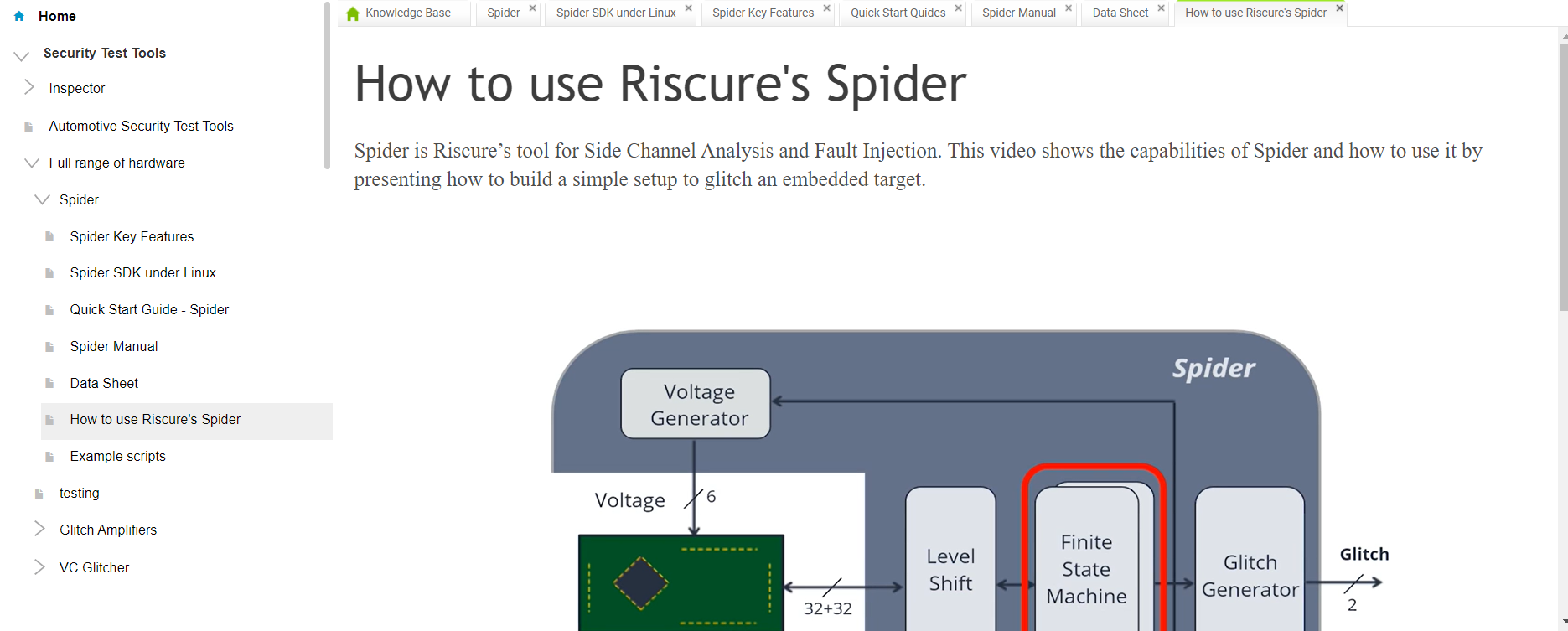
Incorporate interactive elements into your project document to enhance user engagement and understanding. You can utilize clickable links, interactive charts, or multimedia content to give all project stakeholders a dynamic and immersive experience.
Interactive features and visual elements help present information in an impactful way, making it easier for stakeholders to grasp complex concepts faster.
Provide On-the-Go Mobile Access
Project documentation is only helpful if teams can access it on their mobile devices when needed. You can optimize the document’s layout and design to ensure easy access and viewing on smartphones and tablets.
Creating a mobile-friendly document enables stakeholders to access the information conveniently, even while they are away from their desks. This flexibility promotes better collaboration, decision-making, and responsiveness among the project team.
Make it Searchable & Easy to Navigate
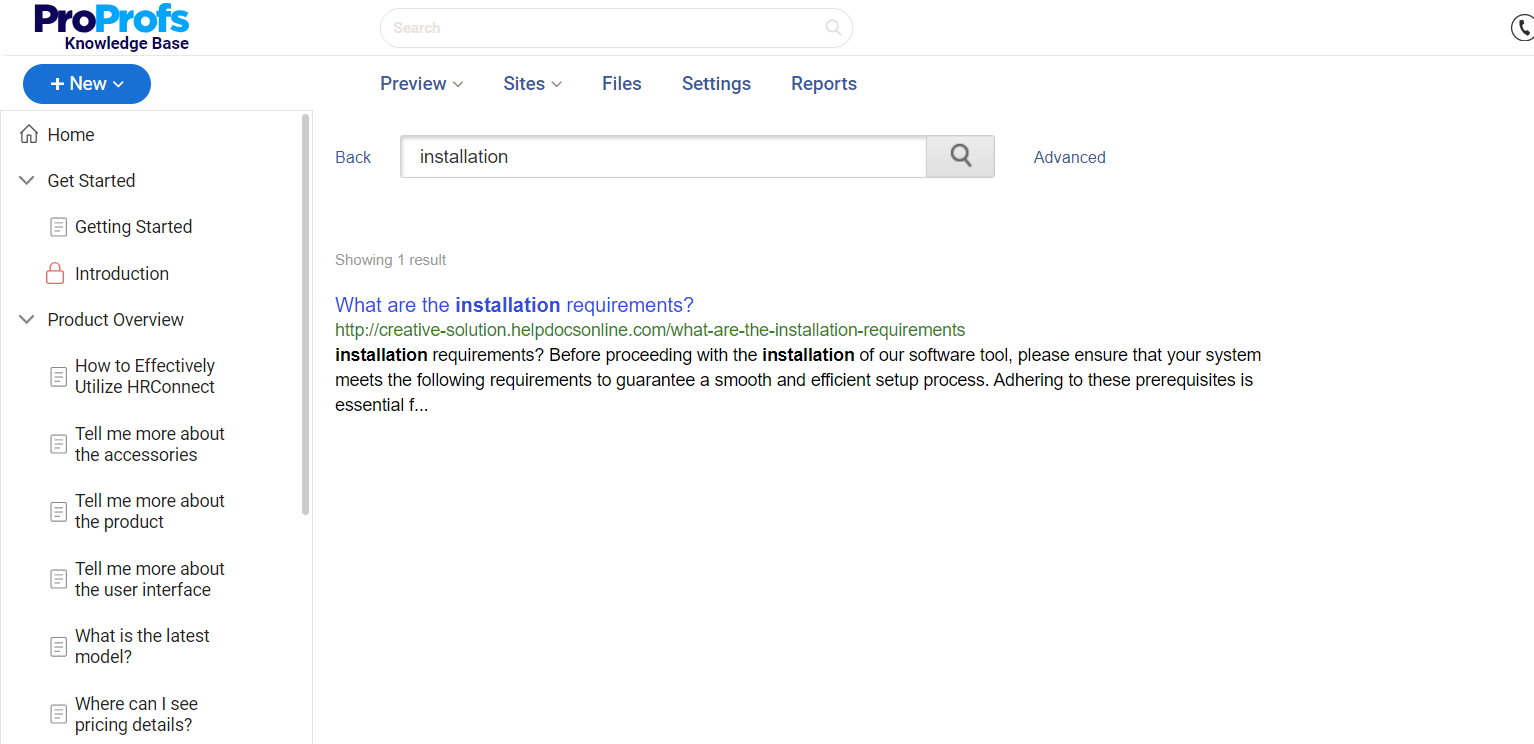
Searchability and navigation are two crucial elements that should not be ignored. You can implement a logical structure within your project document, using headings, subheadings, and a table of contents to facilitate easy navigation.
Additionally, you can incorporate a search function that lets stakeholders quickly locate specific information within the document. A well-organized and searchable document saves time, enhances user experience, and ensures your teams get everything they need in seconds.
Define Clear Objectives
Kickstart your project document by articulating clear and concise objectives. These objectives serve as the guiding light, giving your teams a clear idea of what the project aims to achieve.
As you start creating project documentation, clearly state the project’s purpose, desired outcomes, and measurable goals. Avoid ambiguity and ensure stakeholders have a crystal-clear vision of the project’s direction.
With clearly defined objectives, you can build a solid foundation for the project, align the team’s efforts, and drive action toward a common goal.
Deploy the Right Project Documentation Tool
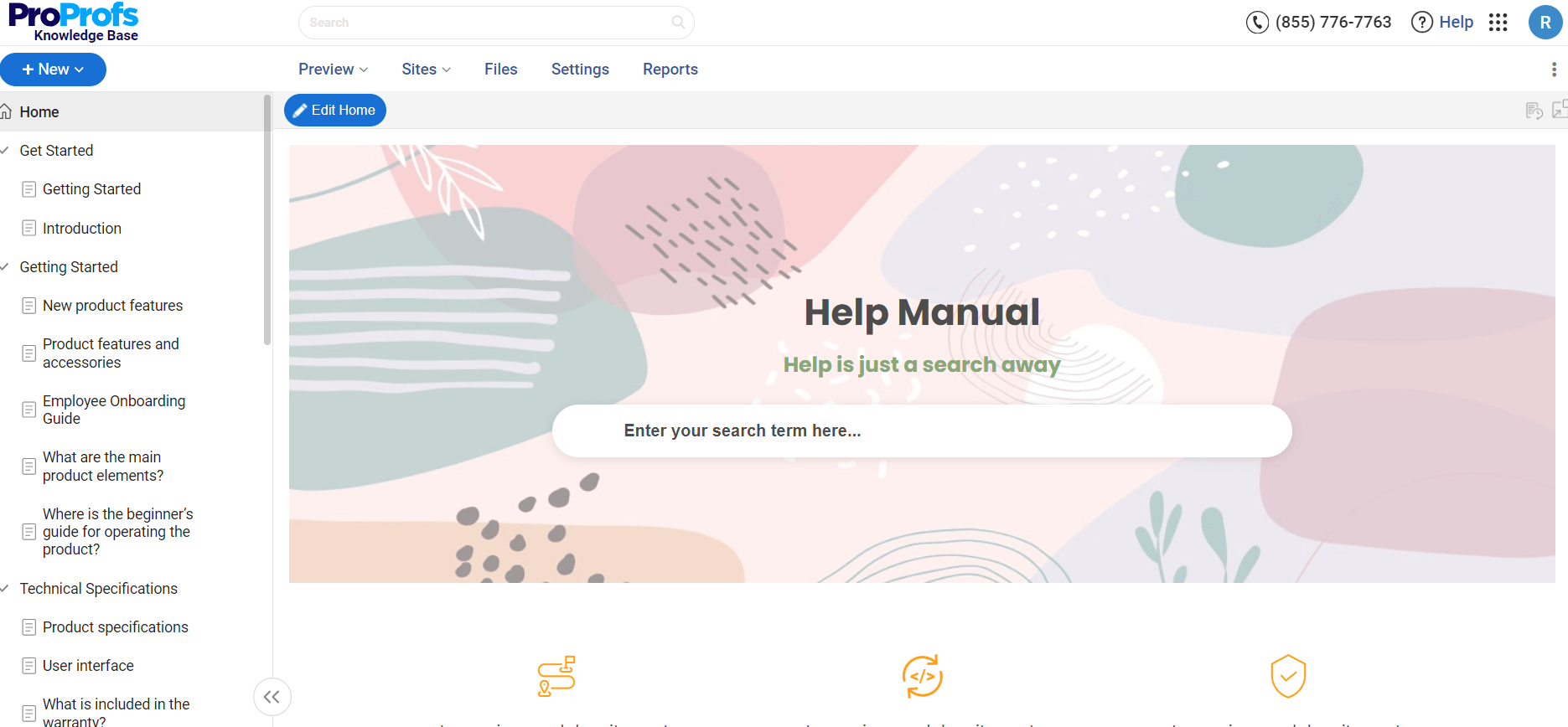
Deploying the right project documentation tool can give your efforts the much-needed boost. It will equip you with all the bells and whistles you need to get started in the right direction and achieve an impressive document.
When investing in document collaboration tools, look for one that aligns with your team’s needs and offers collaborative features, version control capabilities, and customization options. With the right tool in place, it will be easier for your team to make content curation collaborative and simplify document management.
Best Project Documentation Templates
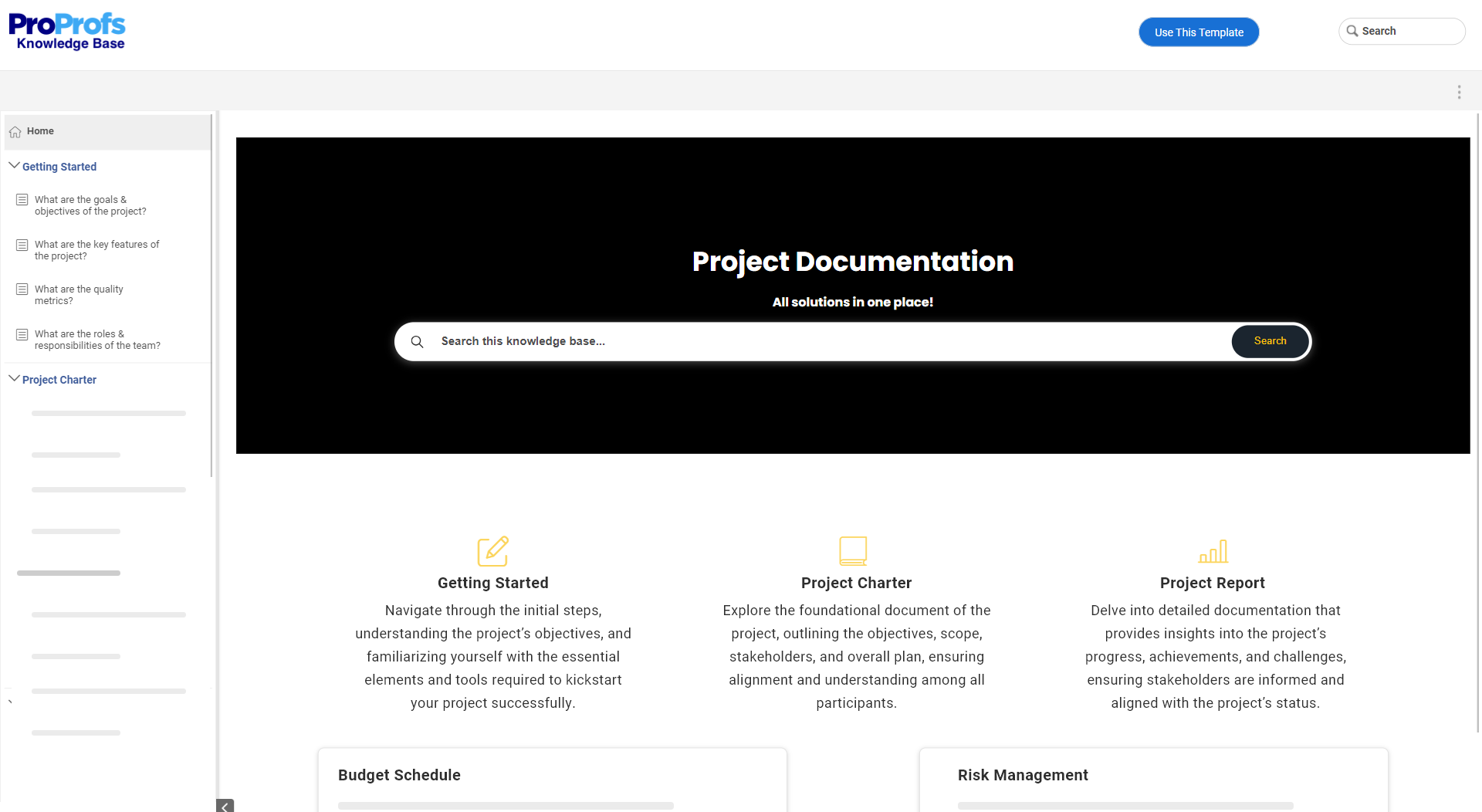
Writing project documentation can mean spending days or weeks doing the initial groundwork. What if we told you there is a shortcut to the process?
Project documentation templates offer a ready-made framework, so you don’t have to do the heavy lifting. The templates take a lot of pressure off your shoulders by giving you a pre-defined table of contents, topic-relevant sections, a dedicated space for branding, and much more.
With these beautiful templates, your work is reduced to half, as you don’t have to work on a blank canvas. As your project progresses, you may want to expand the template by adding more categories and information.
ProProfs Project Documentation templates are diligently designed with a table of contents and pre-defined sections to make documenting a breeze.
This template for writing project documentation is a good starting point. As your project evolves, you can keep adding more categories, pages, and articles to keep it organized and structured.
Examples of Project Documentation
While the documentation is quite comprehensive for large projects involving multiple change requests, documentation for small projects is mostly limited to the basics.
Let’s explore some of the common examples of project documentation.
Project Charter
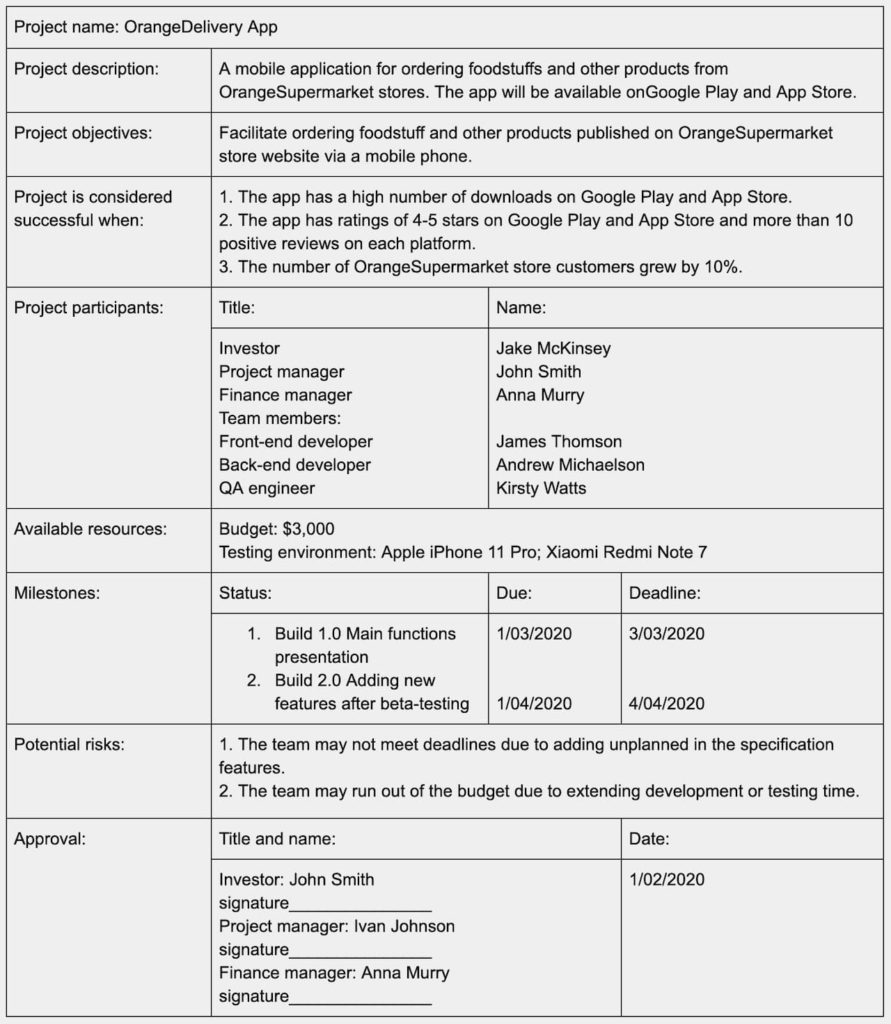
It marks the project’s official start, defining its purpose, objectives, scope, and stakeholders, aligning expectations, and granting authority to the project manager.
Change Request Management
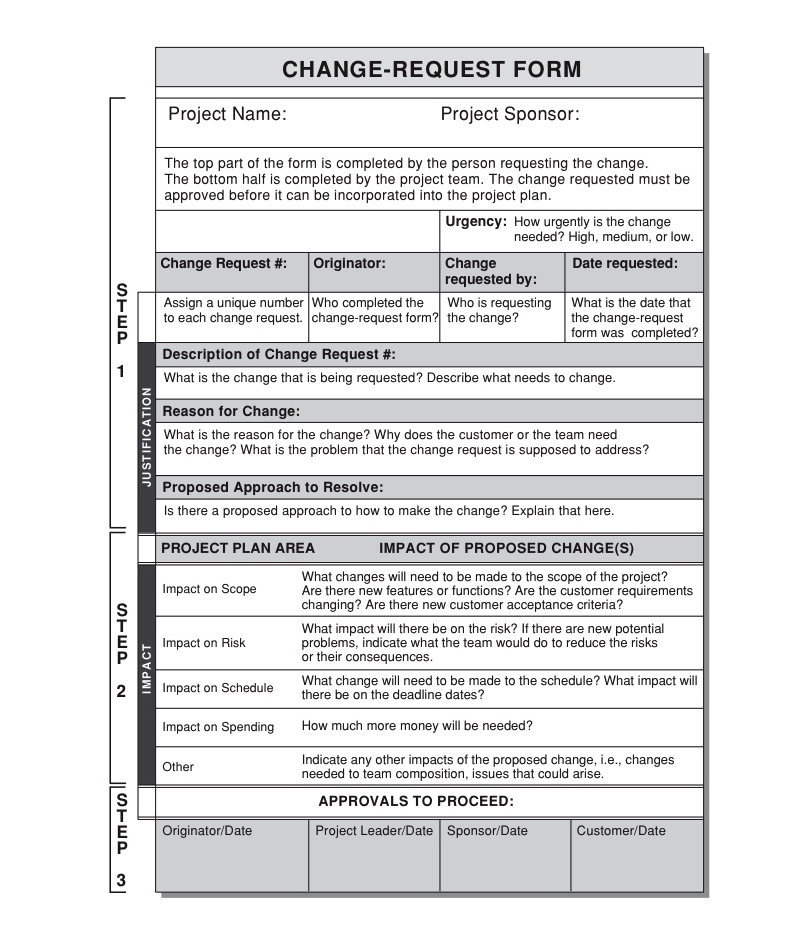
It assists in systematically tracking and evaluating proposed changes, ensuring that project scope, timeline, or budget modifications are carefully considered and approved.
Project Closure Sheet
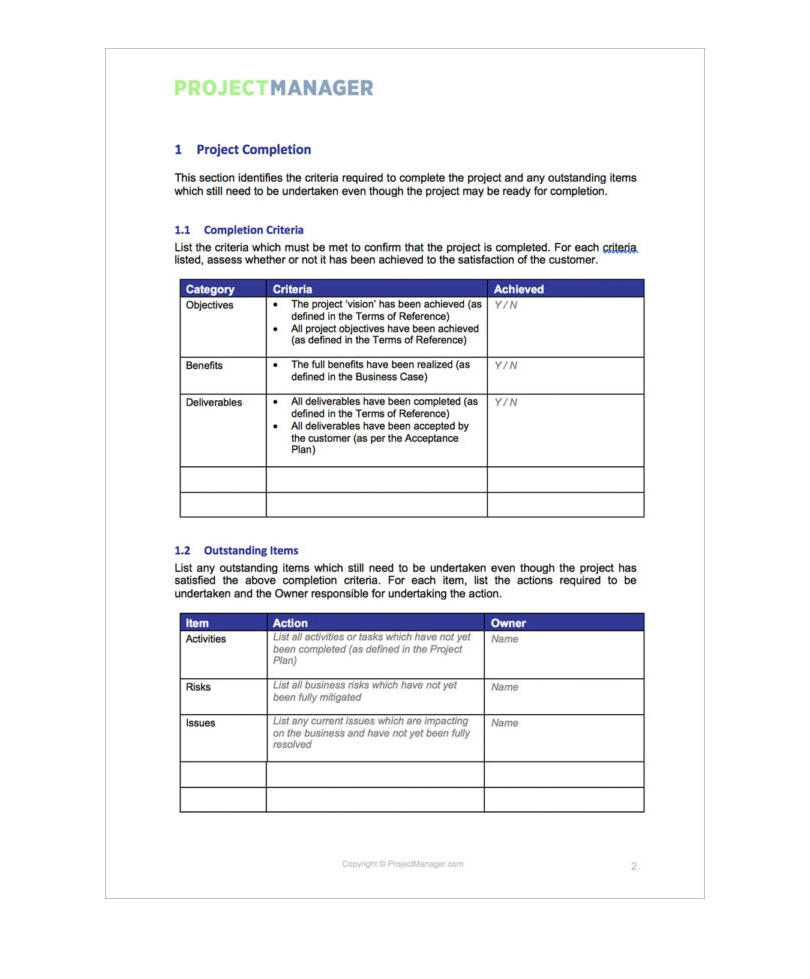
It assists in formally concluding the project, documenting its outcomes, successes, and lessons learned, and facilitating organizational learning and improvement for future projects.
How to Choose the Right Project Documentation Software
To write impactful project documentation, you need a knowledgeable team. But to bring the documentation to life and share it with key stakeholders, you need the support of a solid tool.
Depending on your project’s size, scope, and requirements, you may need a simple tool with basic features or an advanced tool with unique functionality. Different kinds of online documentation software are available today, but how do you know which one is worth the investment?
Keep an eye out for these top features when looking for project documentation software:
- Easy to use with little to no coding required
- Simple to set up without any specialized skills or training
- Ready-to-use documentation templates that help you get started quickly
- An intelligent search system that displays context-relevant results
- User management and access control to help teams work in collaboration
- Internal comments for team discussions on articles
- A workflow review and approval system to ensure content accuracy
- Robust integrations with tools like Slack and JIRA for smooth communication
These are the standard features that any tool you pick must have. Depending on your requirements, you can also opt for tools with advanced features like reports and version control.
See how Descartes Systems (Germany), one of the leading manufacturers of inventory management and warehouse logistics solutions in the e-commerce industry, chose ProProfs Knowledge Base for managing their end-user documentation.
“Our end-user documentation is constantly growing with ProProfs. We are happy!”
Erik Uhlich, Product Manager, Descartes Systems (Germany) GmbH
Improve Project Planning & Execution With Project Documentation
Project documentation is a prerequisite to successful project execution and delivery. With up-to-date documentation, you can easily track progress, identify bottlenecks, and fix them quickly. To curate an impactful project document, bring all information to a central space, add relevant articles for different stages of project management, and give them a proper structure.
All these steps can be efficiently executed with a robust project documentation tool like ProProfs Knowledge Base. Its pre-approved project documentation templates and the AI-powered WYSIWYG text editor make creating content on the go fast and convenient. You can collaborate with your team members using internal comments, too.
With its contextual help, you can easily guide users on certain features, explain complicated terms, and provide additional information with tooltips, lightboxes, and popups. You may explore the tool to know more.
 Tips
Tips
We’d love to hear your tips & suggestions on this article!
FREE. All Features. FOREVER!
Try our Forever FREE account with all premium features!

 We'd love your feedback!
We'd love your feedback! Thanks for your feedback!
Thanks for your feedback!







